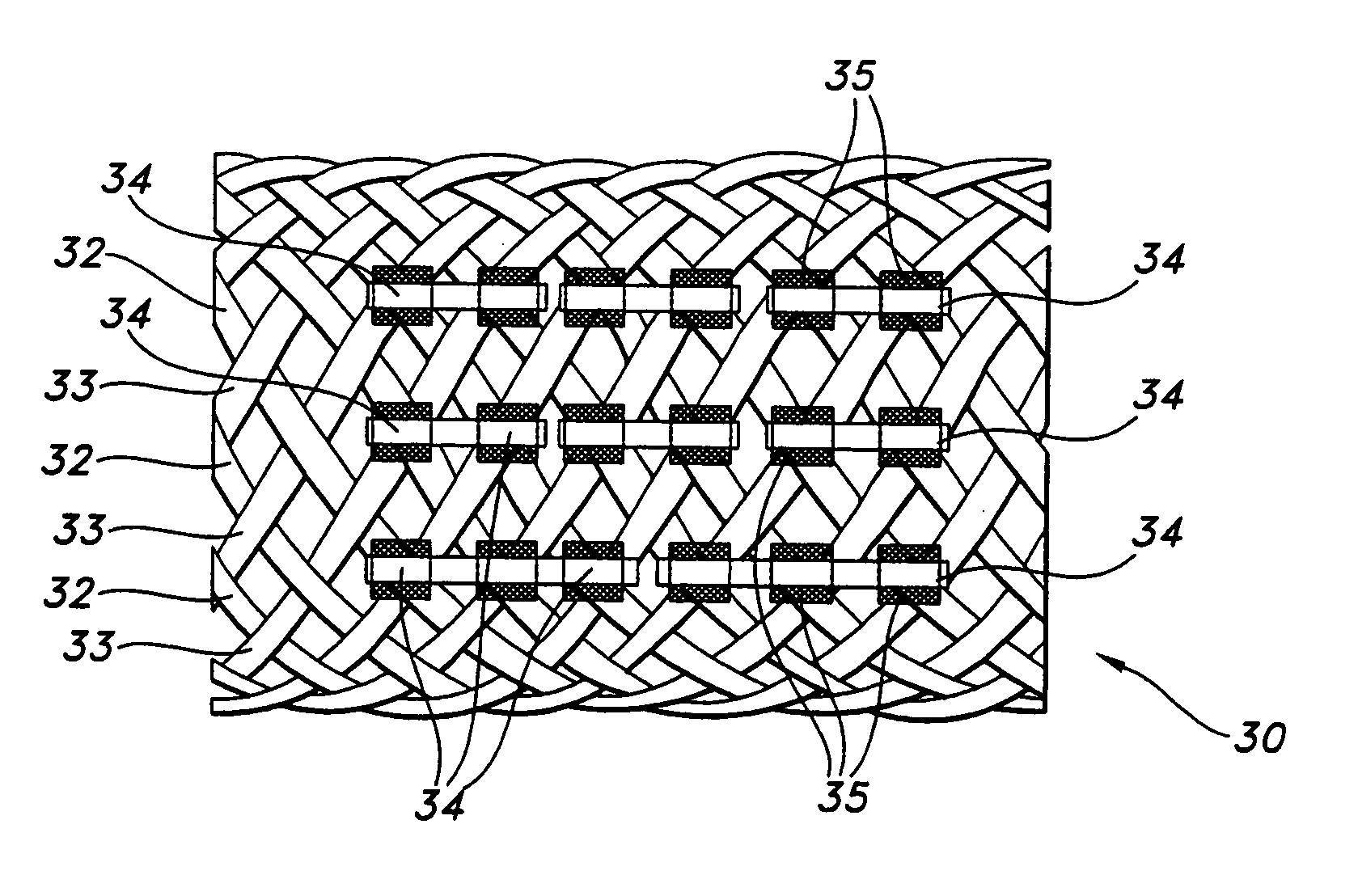Biodegradable implants having accelerated biodegradation properties in vivo
a biodegradable implant and prosthesis technology, applied in the field of biodegradable implantable prosthesis having accelerated biodegradation properties in vivo, can solve the problems of implant or stent loss of strength, temporary blockage of the lumen, and uneven degradation of biodegradable materials, so as to reduce the degradation time/rate and reduce mechanical properties. , the effect of reducing the degradation ra
- Summary
- Abstract
- Description
- Claims
- Application Information
AI Technical Summary
Benefits of technology
Problems solved by technology
Method used
Image
Examples
example 1
[0074] A stent in accordance with the present invention was manufactured with 36 braided threads of a diameter of 0.5 mm. The threads were made of a copolymer of 96% poly-L-lactide and 4% poly-D-lactide (PLA96). The stent was formed having an initial fully opened diameter of about 22 mm. The unexposed PLA96 stent in the example has Radial Compressive Force˜2.00 N when compressed at a 15 mm diameter, according to the graph in FIG. 5. The graph really only shows the difference in RCF at 15 mm between the three groups (unexposed, 25 kGy, and 50 kGy) initially and over time, as tested by a specific test method. The stent structure was exposed to e-beam radiation at various intensities to yield a predetermined dosage. FIG. 5 is a graft showing the loss of mechanical strength of pre-degraded stent structures at various levels of radiation exposure, 0 kGy, 25 kGy and 50 kGy. The pre-degraded stent structures were tested for the strength of the radial force of the pre-degraded stent at vari...
example 2
[0075] A stent in accordance with the present invention was manufactured with 36 braided threads of a diameter of 0.5 mm. The threads were made of poly(L-lactide) (PLLA). The stent structure was exposed to about 50 kGy e-beam radiation, in a manner as above discussed in Example 1. Four elastomeric runners made from medical grade thermoplastic polyurethane sold commercially under the trade name Tecoflex 80-A, by Thermedics Polymer Products, Wilmington, Mass., having a diameter of approximately 0.25 mm each were attached to the stent structure. The axial runners were adhered to the stent by applying an adhesive MADE from Tecoflex 80-A dissolved in methylene chloride.
PUM
| Property | Measurement | Unit |
|---|---|---|
| diameter | aaaaa | aaaaa |
| diameter | aaaaa | aaaaa |
| diameter | aaaaa | aaaaa |
Abstract
Description
Claims
Application Information
 Login to View More
Login to View More - R&D
- Intellectual Property
- Life Sciences
- Materials
- Tech Scout
- Unparalleled Data Quality
- Higher Quality Content
- 60% Fewer Hallucinations
Browse by: Latest US Patents, China's latest patents, Technical Efficacy Thesaurus, Application Domain, Technology Topic, Popular Technical Reports.
© 2025 PatSnap. All rights reserved.Legal|Privacy policy|Modern Slavery Act Transparency Statement|Sitemap|About US| Contact US: help@patsnap.com



